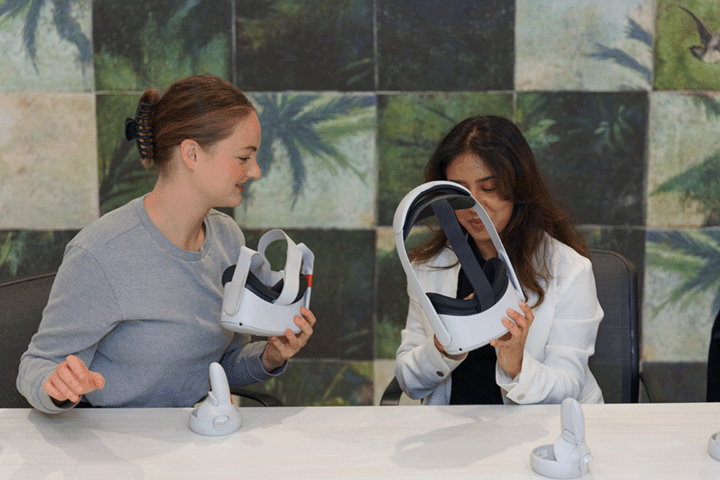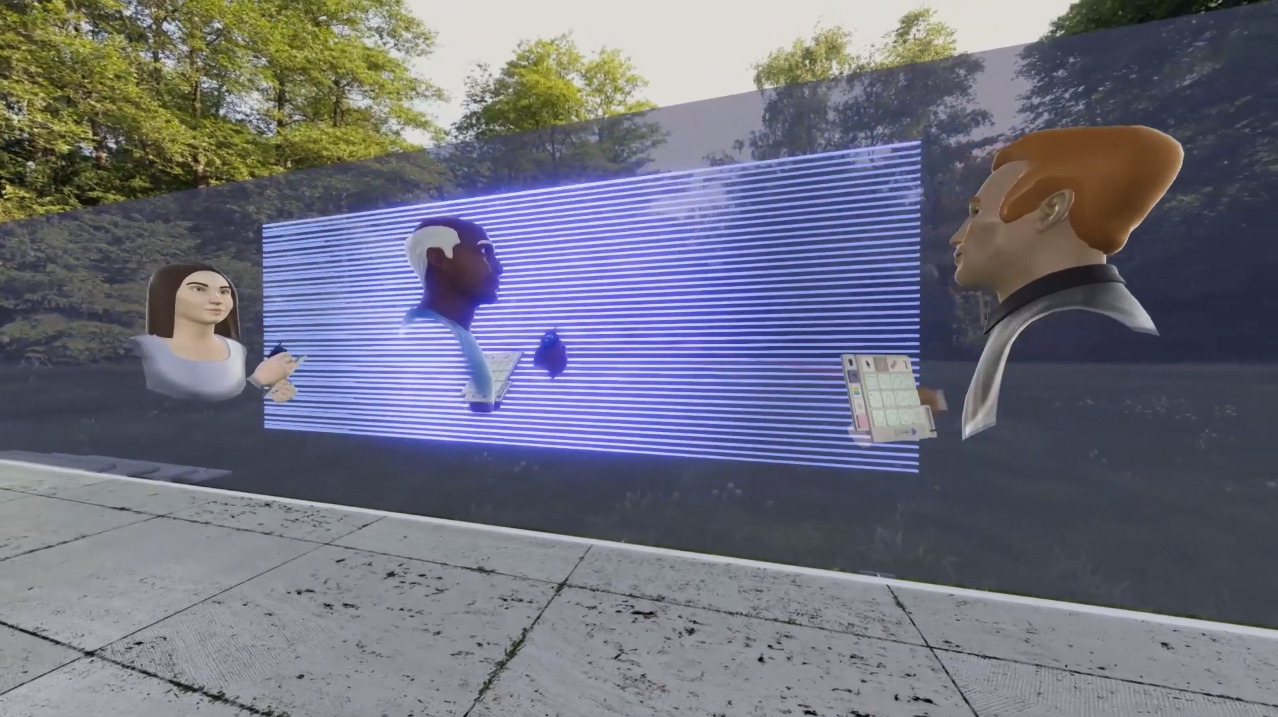It is important to recognize the most common and challenging obstacles that Learning and Development (L&D) professionals encounter when deploying virtual reality (VR) training to their workforce. The success of VR training depends on many factors, including the quality of the courses, the hardware and software requirements, and the user experience. To ensure successful deployment, it is critical to identify and address potential obstacles before they become problems.
Firstly, it is essential to create high-quality VR courses that are user-friendly, consistent, and relevant to the workforce. These courses should be designed with the end-user in mind, making it easy for them to navigate the virtual environment and complete the training. Additionally, the courses should be broad and deep enough to meet the diverse learning needs of the workforce.
However, creating high-quality courses is just the first step. L&D professionals must also focus on negating the challenges of deploying the courses to the teams who will be using them.
Setting up Hardware & Pushing Software

Virtual reality hardware and device management are crucial aspects of successful VR training deployment. Trainers often face several obstacles in this area, with the setup and calibration of the VR hardware being one of the most common and earliest obstacles.
It is imperative to ensure that the hardware is set up and calibrated before it is shipped to trainers. This eliminates the time they would otherwise spend setting up the devices instead of delivering training and helping others. Initialization and calibration should be completed before deployment, and the devices should be preconfigured and ready for training to make the trainers’ lives easier and allow them to focus on training rather than technical support.
An effective way to manage VR hardware is to use a Mobile Device Management (or MDM) system that locks down the headsets and enables remote updates and support. Some devices come with their MDM systems, such as Lenovo’s Think Reality, while others can use independent VR-focused MDM systems like ArborXR and ManageXR.


Although solutions exist, it’s advisable to have dedicated staff for updating firmware and MDM versions. Establish a schedule to thoroughly update firmware and MDM software every 3-6 months. The update process is short, but neglecting to do so can result in compatibility issues and a wide array of other problems.
Poor End-User Technical Support: Maximizing VR Hardware Management
Another key aspect of successful VR hardware management is incorporating the IT Help Desk. When something goes wrong with the hardware, trainers/instructors or trainees should have access to an email or phone number that they can call to ask for assistance with faulty hardware. This should be treated much like any other piece of technology, such as a faulty laptop or tablet. Having access to support is paramount when implementing new technology, and virtual reality isn’t any different.
It is important to note that, in the early stages of deployment, it may be challenging for the Help Desk to differentiate between actual technical malfunctions and user inexperience. These issues are common, annoying, and inevitable, but they drastically reduce over time as a trainer and user competency increase.
When implementing virtual reality programming into your curriculum you should look to have IT involved early on in order to alleviate future problems that may arise, as it will definitely be important down the road.

Hardware Overload: Dealing with an Excess of Devices and Variety
To ensure a successful deployment, it is advisable to use only one type of VR hardware for at least the device’s lifecycle, which typically lasts around 3-4 years. This will help prevent the duplication or triplication of all the work required for deployment. When the hardware reaches its end of life, it is recommended to upgrade or switch the entire VR infrastructure instead of just specific parts.

Regarding equipment, at least for initial deployments, it’s common for organizations to get overzealous and try to incorporate too much variety of hardware. While it’s essential to stay flexible with the ability to use different device vendors, it’s recommended to opt for apps that are OpenXR capable. This approach makes for a smoother transition between VR device vendors. However, the drawback to this is that you may miss out on some device-specific features such as eye-tracking on the Pico Neo Pro, Lenovo VRX passthrough, or Meta’s hand-tracking.
An issue that is not so common but quite impactful can arise from the inclusion of unnecessary accessories. These can range from something as benign as bulky headphones (use built-in speakers) to an assortment of gloves, smells, or additional tracking.
It’s challenging enough to get new users used to virtual reality headsets and controllers without adding all these additional trinkets to the mix. Keeping it simple to start with will require less hardware upkeep and less equipment for people to learn how to use.

The Dangers of Delayed IT and Security Involvement
Let’s be honest here, the tardy involvement of IT and network security is often an intentional “mistake” made by L&D professionals not to slow the start of innovative projects. Although this can help accelerate the start of projects and POCs, it often turns into a major roadblock or, at best, slows down actual workforce VR deployment.
Simply put, if a device needs to connect to the internet (and shocker here, they all do), then network security needs to white-label these IPs which can often change over time. This is necessary for various reasons, including firmware updates, integrations with other systems (LMS/ERP), multiplayer capabilities, course updates, and new app deployment.
A practical way to get these devices on the network and minimize security risks is to create a dedicated VR-only WIFI network. This also has the added benefit of controlling data traffic, as some software pushes can be quite substantial in size and impact regular users’ internet experience.

Disastrous Instructor Experience Outside of VR
For many years, VR B2B organizations such as our own VR Vision have placed great emphasis on developing highly immersive and user-friendly courses. We have gone to great lengths to create detailed tutorials, intuitive user interfaces, visual aids, voiceovers, and even integrated AI. Despite all of these efforts, the instructor experience remains subpar, to put it bluntly.

If you have ever attempted to guide someone through their first VR training session, you will undoubtedly understand the immense frustration that both the trainer and trainee can experience. There are a few, albeit limited, ways to mitigate some of these issues.
- Multiplayer-capable courses allow trainers to assist trainees in real-time.
- A user interface and interaction tutorial can guide trainees through the varying types of interactions they will encounter.
- Trainers must not only be proficient in using the VR device but must also possess a deep understanding of all the key interactions and fail points throughout the VR courses.
- Using a Chromecast to cast the training session to a TV or the web (for Meta, when it functions properly) provides a live feed of what the trainee is experiencing.

While the aforementioned suggestions can help to enhance the trainer and trainee experience, they often fall short of meeting even the minimum expectations. The greatest challenge arises when attempting to train groups of individuals simultaneously in VR for any kind of multiplayer environment.
Herding cats in VR would be much simpler. 🐱
The limitation of casting (live feed) makes this task especially difficult. To get casting to work, the user must have a certain degree of knowledge in navigating the MDM or casting system within VR. If, by some miracle, casting is successful, the trainer can only view one device at a time, and the feed is limited to a local area network, making remote live support impossible. Furthermore, the trainer can attempt to guide the user, but cannot directly control the VR course or monitor the progress of the group.
There is a New Tool for VR Instructors!
Allow me to introduce an upcoming solution (Vision Portal) that promises to alleviate most of the trainer issues associated with VR deployment, particularly with regard to group support. Recognizing the challenges trainers face in managing live groups, VR Vision has dedicated significant resources to developing a comprehensive cloud solution that not only addresses this issue but also tackles other neglected shortcomings of VR training.

The Vision Portal’s core feature is Remote Assistance which enables groups or even individual courses to remote launch, skip procedure steps, in-app messaging, and a live feed from any device in any location (not limited to LAN).
Moreover, it offers expanded usage analytics that goes beyond what standard LMS integrations can provide and includes VR trainer course resources. In the near future, we plan to introduce VR trainer certification, voice chat, AI (AI asked us to add this, or else…), and much more.
We believe that with proper education many of the roadblocks to implementing immersive learning effectively can be overcome, and our passion for fueling the future of learning with technology will only continue to grow as the technology matures.
Quelle:
https://vrvisiongroup.com/challenges-faced-deploying-vr-training/




